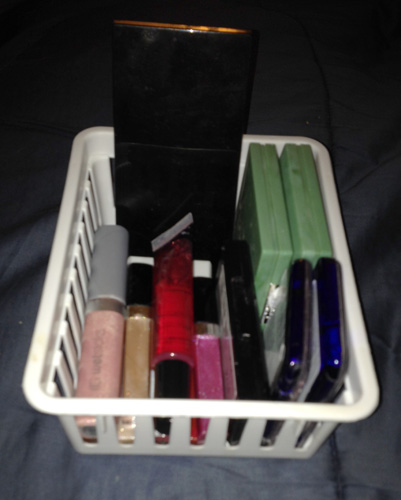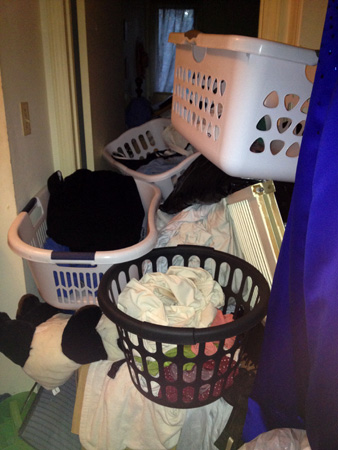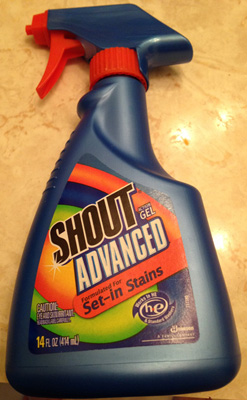
As part of my (endless) organization/cleaning purge, I decided to tackle my makeup collection recently, with some very surprising results. (Bonus: tips for helping you spring-clean your own makeup collection are at the end of this article!)
I had thought my makeup collection was about as streamlined and simple as it could get, since I don’t wear much makeup these days anyway. But I noticed that there were a few products that I wasn’t using as much. So, I literally took the organizer that serves as my makeup storage and dumped it out on the bed to sort through it…and this is what happened next:
Products Before the Purge

Lip glosses (yes, yes, I know, one girl does not need so many! LOL)

Lipsticks (can you tell lip products are my favorite makeup yet?)

Face products (foundation powder, blush, bronzer)

Eye products (eyeshadow, liner)
The Purging Process
Once I had sorted each category, I took a long, hard look at each product. Was I using this? Was it still safe to use? Did it work like I wanted?
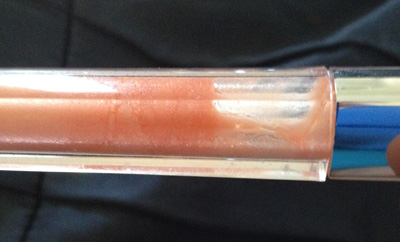
One thing I saw was that several of my lip glosses had begun to separate and change color slightly in the tube. Yuck! (The pictured lip gloss was bought in 2011–definitely wayyyyy too old to be using!)

This lip palette, for instance, was bought back in 2007, according to my note in Sharpie on the bottom of it. Yikes! (This is a really handy tip for keeping track of how old your makeup is–note the month and year on the bottom of it when you get it, and then you’ll know when it’s too old to use!)

Some of the products, like this mini-makeup kit, have been gifts–and gifts are especially hard for me to get rid of because I’m very sentimental. But in this case, this kit has been sitting in my box for at least the last 4 years…:/
I was REALLY tempted to quit in the middle of this purge, to just keep all of the makeup, but when I realized how old some of it was, I knew I couldn’t in good faith keep putting that on my face. Makeup definitely doesn’t last forever! So I set my mind to be ruthless about getting rid of the oldest products, the products I didn’t use, etc. (I don’t wear a lot of makeup, so I didn’t need all of them anyway.)
The Results
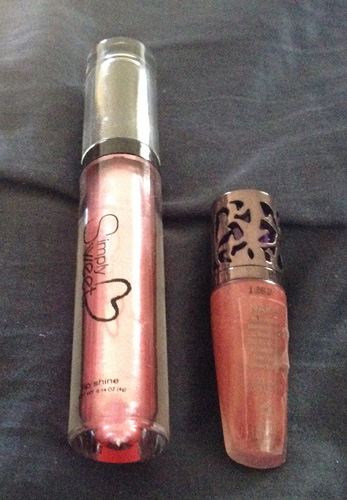
A MUCH-reduced gloss collection, taking out all the ones that were now too old to use…

And a little smaller lipstick collection to match 🙂

I pared down all the eyeshadow palettes to the one I really love and use the most…

…and I kept the one eyeliner I have (though I don’t break it out very often).

I took out the foundation powders that I haven’t used since I graduated college in 2007 (seriously!), but I swapped in a couple of the lip stains to see if I could use them as “cream blushes.” (Note: you can’t really blend them well enough to make them work, sadly.)

A couple of trusty tools round out my new, much lighter makeup collection.
What I Kept and What I Got Rid Of
Just to show you exactly how much I got rid of, here’s the “After” picture of my makeup organizer:
And here’s the basket of stuff that went away:
Yep, I got rid of about half my makeup collection in one fell swoop! Pretty amazing for this hoarder in rehab! LOL
To Purge Your Own Collection
- Mark each makeup piece with the date you first used it so you know when to throw it out. (This is SO helpful!) Refer to this article for when to throw away various makeup products.
- Check each product for changes in texture, smell, or application; if it looks “goopy,” smells weird, or doesn’t seem to have the same “oomph” that it used to, it’s probably gone bad.
- Be ruthless when deciding whether to purge an item. Are you REALLY going to use that product if you keep it, or are you keeping it to justify the expense of it? (I kept falling into this trap during the makeup purge, and I had to keep thinking, “Is this something I REALLY love and use?”)

